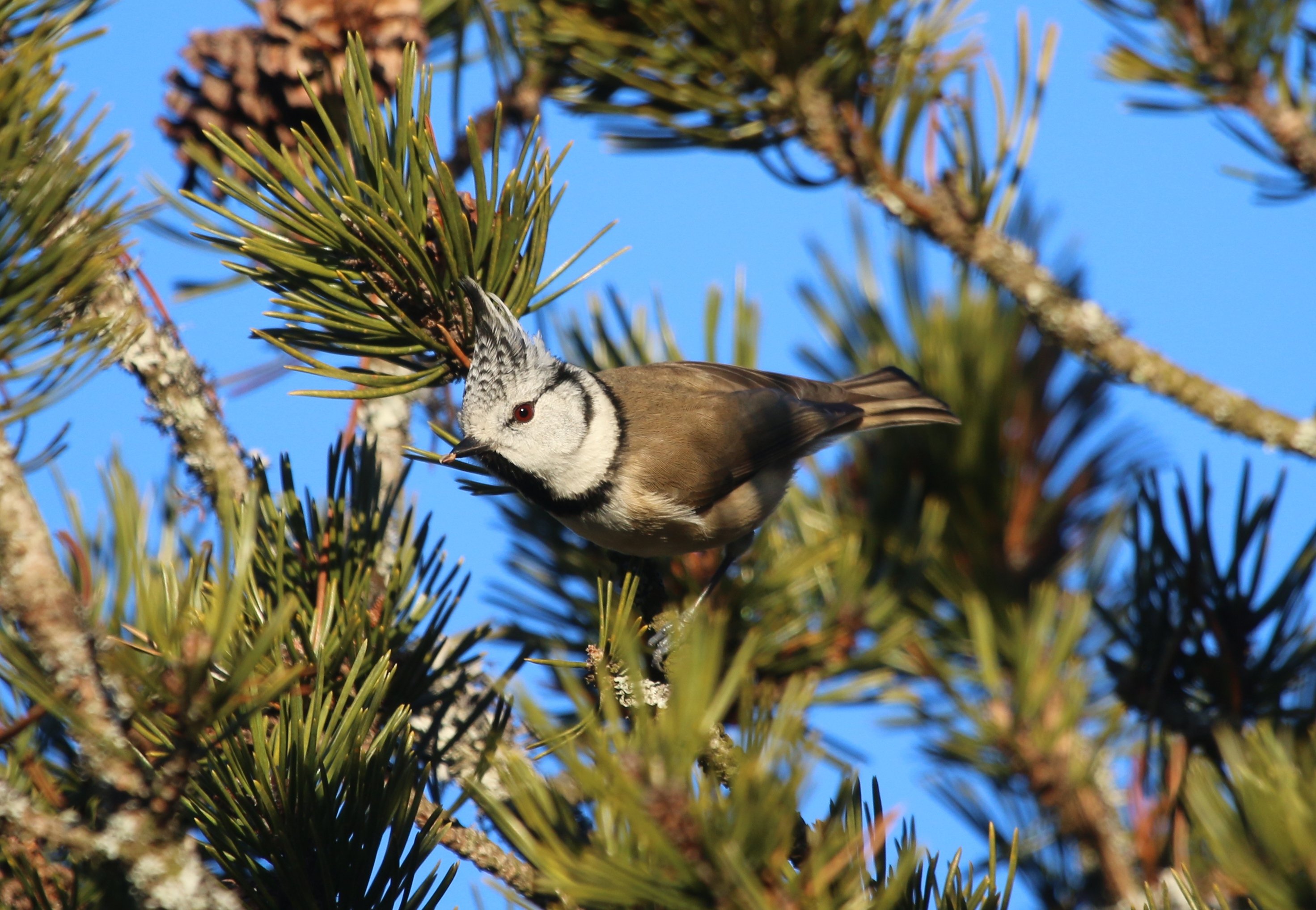
This post is a first for 10,000 Birds. Yes indeed, and hold on to your seats: this post is about a European member of the Paridae, which the British chose to call “tits”, and it will not contain any suggestive and dingy jokes. There will be no mentioning of how much birders here enjoy closely monitoring tits, no details about how to properly handle great tits during banding sessions, no jokes about pairs of blue tits, nothing of that sort.
And do you know why? Well, because I am German, and in German the Paridae are called “Meisen” which has no meaning whatsoever beyond the bird. I think it is just ridiculous and frankly quite embarrassing to call birds “tits”, and don’t get me started on “shags”. So far as I know, the British have called their Paridae “tits” because the Germans didn’t, and the Brits wanted to show the world who has a better sense of humour. Which I think kind of backfired. But anyway, as I mentioned at the beginning of this post: this is about the birds, and the birds only.
The Crested Tits.
Crested Tits are my favourites amongst Germany’s six regular species. They may lack the gaudy colours of the Great and Blue Tits, but their lichen-like patterns and black stripes on their heads and crests more than make up for their lack of blue and yellow. The crests are very interresting indeed. Did you know that in courtship rituals, the size of the male’s crest matters less than the technique with which it is erected? Interesting stuff for sure – and consolatory in a very subtle and inexplicable way – to others, not to myself.
Crested Tits are rather common here in Germany and can be found anywhere so long as there are a few pines around. As a matter of fact, you’d be hard-pressed to visit a small stand of pines and not encounter Crested Tits. However, they aren’t quite as granted as the other tits in that they are less inclined to propperly show themselves. They tend to keep closer to the tree trunk, prefer the shade and rarely venture out onto exposed branches. They also seem to remain within one tree for longer periods of time compared to other tits, who tend to move around more actively, flying from branch to branch and changing trees more often. Indeed, this is the only species of tit where you’d really like to know the call in order to find them, and a beautiful call it is, too: a high-pitched see see seee followed by a low and soft purrrrr. Beautiful stuff for sure – to anyone, myself included.
I know that it is now really time to show you the tit pictures you came here for, but please allow me another short paragraph to explain the post’s cheesy title. The Crested Tits’ shady affinities and amazing crests tend to suck up all of a birder’s attention, and it was not until a trip to the Black Forest last week – where the following images were taken – that I noticed yet another great feature of these über-birds. While their crest is neat and their black stripes are sublime, these properties can’t compare to the intense colouration of their eyes: a fiery ruby red – or red vine red, or cherry candy red, depending on personal taste. So, next time you find yourselves in pine forests of continental Europe (you know – the old Europe), you could do much worse than to follow a soft purr all the way to ist source and watch Crested Tits in the sun. Beautiful stuff for sure. Period.
Now enjoy the tit pics.
A classic Crested Tit Encounter: shade, branch in front of face, black eye.
Now, that’s better, but still not a cigar. However, some shade lines can be funny in a peculiar way.
Giving in but not giving up: a Crested Tit out in the open – which flew away before I could take a picture with its head turned towards me.
Look at the crest and the lichen – isn’t that neat?
Perfect performance!
Don’t let the tongue fool you – check out the eye!
And try to convince me that the Crested Tit isn’t one of the world’s best birds after seeing this:


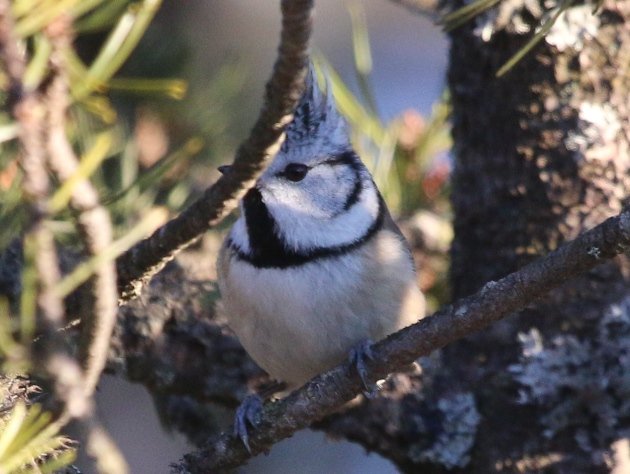
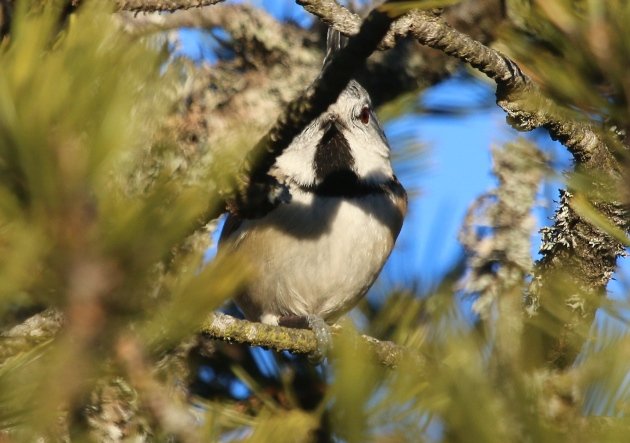
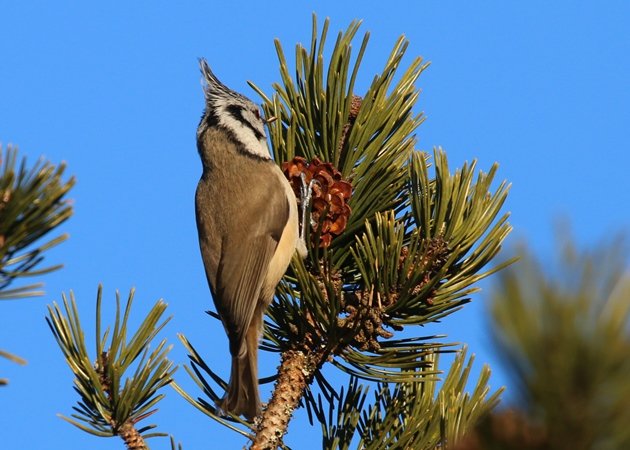
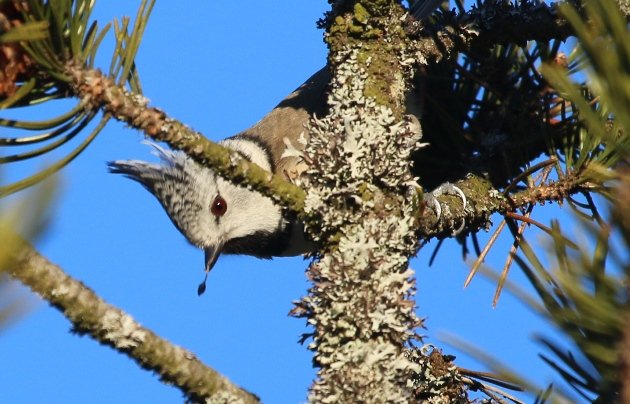
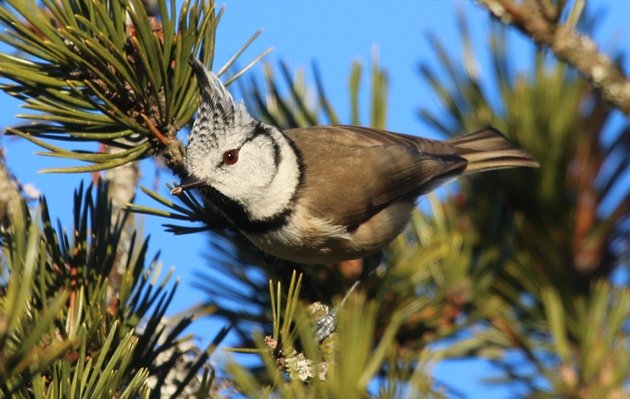
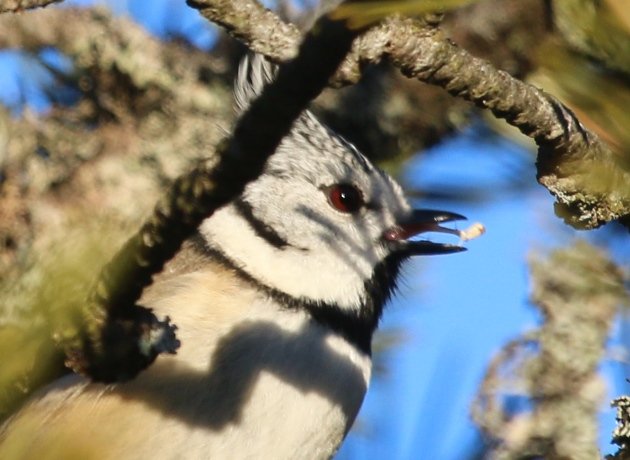
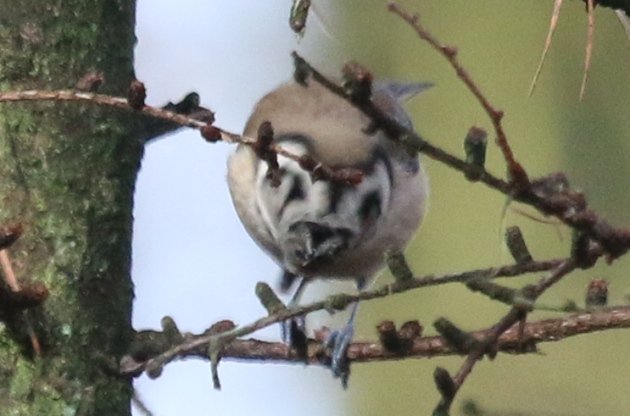



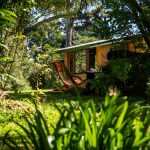
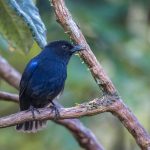
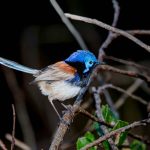
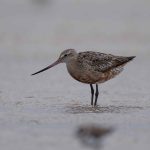
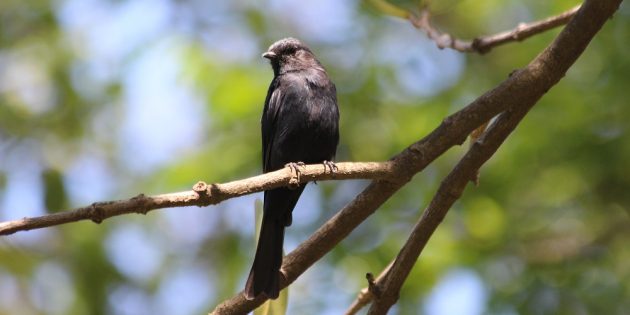

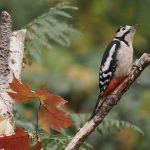
What’s wrong with tit? Just an Old English term ( and thus German in origin) for small. It would have been humorous to name an eagle tit, since they aren’t small, but tits are small. Honestly, why do Germans find jokes so hard?
Good photos and a nice report on a lovely little bird! Aways a pleasure to hear and see them on my annual trip to Germany.
As far as German jokes? They lose a little in translation! OK, maybe lose a LOT!!